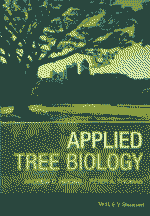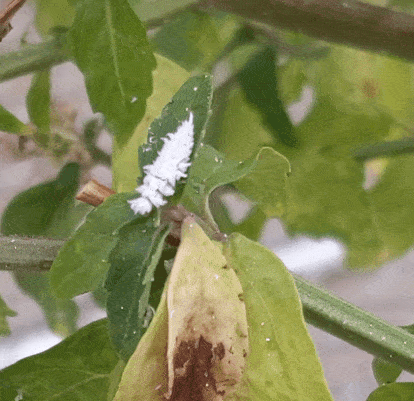
/headhouse
bon's field guide to (zoological) horticulture
go home / welcome to my greenhouse. this is the headhouse, or the place where you can access all the greenhouses where i have stored all my horticulture silliness! an internship with a hort team in early 2024 changed my brain chemistry and now i'm here to make it everyone else's problem. this will hopefully become an expansive section of my site. here are some things i have or hope to store here: shrine to my zoojob, cool info, photo gallery + ID, prop and seed log, botanical illustration downloadables, and notes i take while i teach myself more about horticulture.
between my genuine love of horticulture/related subjects and my enduring hatred of academic institutions, i plan on autonomously learning as much as i can about the subject through textbooks. i am frustrated that i'm not getting to learn what i want to be learning right now so this is how i'm trying to remedy it. this is important to me so i'm also going to try to upload little articles to help me synthesize and to share what i'm learning!
other selected texts:
- Introductory Horticulture (Carroll Shry, H. Edward Reiley)
- Anatomy of Flowering Plants (Paula J. Rudall)
- Introductory Botany (Linda R Berg)
- Plant Science - An Introduction to Botany (Catherine Kleier)
- Plant Factory - An Indoor Vertical Farming System for Efficient Quality Food Production (Toyoki Kozai et al.)
articles & notes
navigation
the basics
this is a quick rundown of the foundational aspects of horticulture that i've been exposed to and am interested in. i decided to seperate this out of my zooshrine because it's all pretty basic info and i want to have more space to talk about plants in the greenhouses that i love :-) the following is in alphabetical order. as an additional disclaimer, this is just what i learned while doing my internship and may not be correct as i just pulled it out of my brain. information may change as i learn more and rectify things i got wrong.
arboriculture
aborists are in charge of making sure that trees are kept healthy and in safe condition for people in the area. they spend a lot of time pruning, watering, fertilizing, and treating trees for parasites. it was kind of astounding to see what a well-pruned tree looked like. they ended up so much tidier than the trees i see when i walk around my city. regular pruning is important because in the wild, trees tend to just discard dead branches by dropping them, but in a campus like a zoo that becomes a hazard.
pruning has to be done correctly, so as to send the tree signals that it no longer needs to try to support the missing limb and so that the wound will close without getting infected. this also depends on the season and whether they're flowering or not; doing so when they are flowering can also introduce them to infection.

there are a lot of different kinds of parasites & infections trees can get, from bugs or fungus or just being planted wrong. scale is pervasive and annoying, especially because there isn't an easy way to get rid of them once they mature. more on scale management in the greenhouse section. one thing that they do is spray the trees down with mineral oil to kill them when they're young.
watering is important, especially in arid areas where trees aren't really meant to be growing. they need more water than the landscape can account for. deep root watering should be done in a grid pattern farther from the trunk than you would expect. the roots travel far!
browse
browse is really cool, one of my favorite intersections of horticulture and animal keeping. some of the species of bushes/trees/etc that grow on zoo property can be used to feed animals or provide enrichment to enclosures. things like honeysuckle, hibiscus, lobster claw, and some trees i don't feel confident enough in listing. it's really crucial that whoever is in charge of browse can accurately ID lookalike species so that nonedible plants don't sneak into meals.

browse is pretty grueling as a job because it involves collecting, cutting/organizing, and dropping off bundles to the animals. it's three jobs in one! it's also pretty funny to hear about the animals that are picky, and who likes certain plants. i think it's so cute.
browse and arbor often go hand in hand since some of the tree prunings can be browsed out and it's convenient if that tree is going to get pruned anyway.
maintenance & upkeep
mostly for outdoor gardens, maintenance is pretty much what it says on the tin. this is essentially doing a lot of watering, weeding, and designing to keep public-facing gardens looking nice. i'm sure there's a lot more too it than that, but i was mostly only exposed to the basic tenents.
production
production is concerned with, well, producing plants to be used around the campus. these can be grown from seed or ordered from nurseries as young plants. there are also large seasonal specimens that are rotated in and out of the houses, or that are kept until new exhibits are ready! ornamental annuals are often grown from seed and then transplanted over the course of several months & deadheaded to ensure maximum bloom when they are ready to be put on display.
the large specimens are kept on a watering schedule based on how long it takes for their soil to become dry. most of them get soaked on a M/W/F schedule. it's fun! you can tell when they are happy with their watering schedule.
greenhouses are incredibly controlled environments and once you figure out the right balance of humidity, light, and airflow, it really just becomes about maintaining it.

biological pest control*
*this is a subset of IPM (integrated pest management), but the full scope of IPM isn't something i'm very familiar with + i'm fond of the pest-predators so i'm just going to talk about them :-)
because greenhouses are controlled growing environments, the plants inside are more likely to suffer from pest infestations since their natural predators aren't present. one of the ways this is combatted is by introducing their natural predators artifically, to keep pest populations in better check. the most common pests are soft shelled scales, mealybugs, and aphids.
bookshelf
books i own/have read on horticulture. click for plaintext information on each






